10 Power-Packed High-Fiber Snacks Nutritionist Swear By
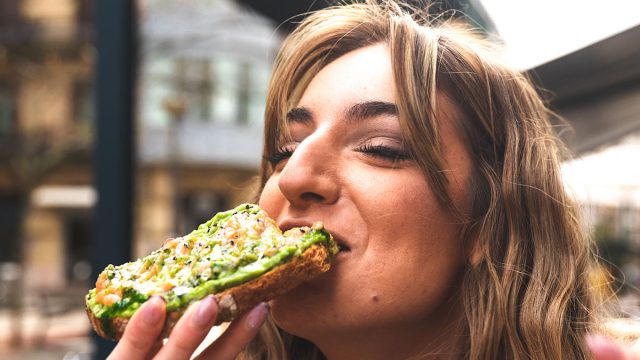
As someone who lives and breathes nutrition, I want to shine a spotlight on an unsung hero of your diet: fiber. Trust me, it's a total game-changer for your body!
Get ready to discover ten delicious, fiber-packed snacks that'll not only make your tummy happy but could also help you shed those extra pounds. These easy additions to your daily routine might just revolutionize how you feel. Ready to give your body some fiber love? Let's dive in!
Why Fiber Is Your Body's Best Friend
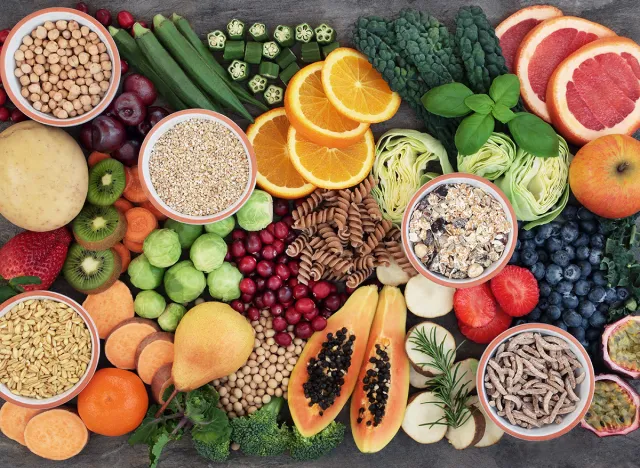
Fiber is like a superhero for your body. It:
- Keeps your tummy happy
- Helps you feel full longer
- Supports healthy weight
- Keeps your blood sugar steady
There are two types of fiber:
- Soluble fiber: Found in oats, beans, and fruits. It's great for your heart and blood sugar.
- Insoluble fiber: Found in whole grains, nuts, and veggies. It keeps things moving in your digestive system.
Why Should You Care?
Eating enough fiber can lower your risk of some scary health problems like heart disease, type 2 diabetes, and even some cancers. That's pretty awesome, right?
How Much Fiber Do You Need?
- Women: Aim for 25 grams a day
- Men: Shoot for 38 grams a day
- Over 50? You can dial it back a bit: 21 grams for women, 30 for men
Here's the kicker: most people only eat about 15 grams a day. We can do better!
Let's Get That Fiber!
I'm a huge fan of getting your fiber from whole foods. It's easier than you might think! Stay tuned for some quick, tasty, and fiber-packed snack ideas that'll make your body thank you.
Remember, small changes can make a big difference. Let's start boosting that fiber intake together!
Apple Slices with Almond Butter
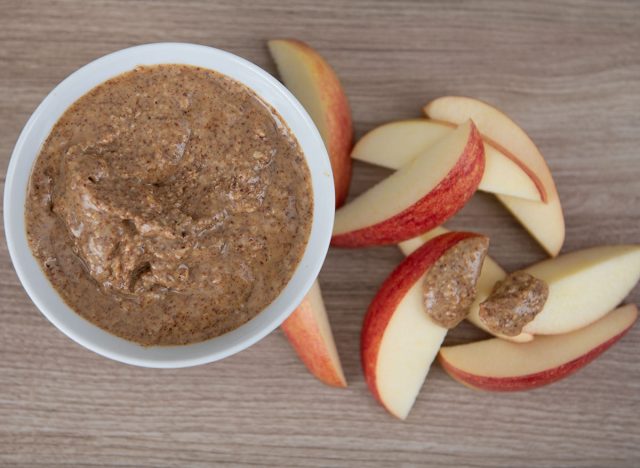
Fiber Content: ~4.5g per medium apple
Why It Works: Apples are rich in both soluble and insoluble fiber, making them a great choice for improving digestion and promoting satiety. Pairing them with almond butter adds healthy fats and protein, making this a balanced snack.
Customize it: Sprinkle cinnamon for extra flavor or swap almond butter for peanut butter if preferred.
Chia Seed Pudding
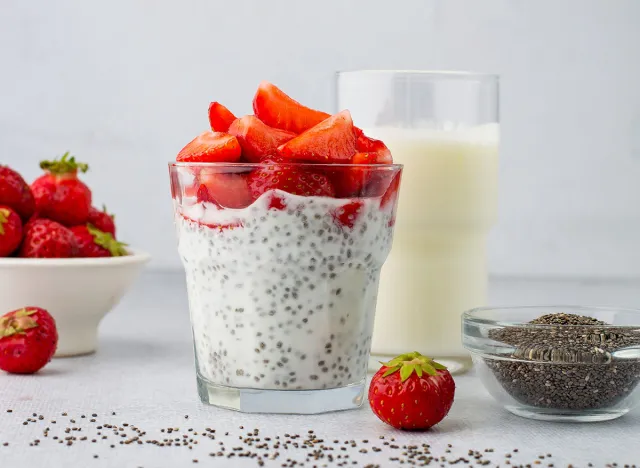
Fiber Content: ~10g per 2 tbsp chia seeds
Why It Works: Chia seeds are a powerhouse of fiber and omega-3 fatty acids. When mixed with liquid (like almond milk or yogurt), chia seeds expand to create a pudding-like texture that's both filling and nutritious.
Customize it: Add fresh berries or a drizzle of honey for natural sweetness, or incorporate some nuts for a crunchier texture.
RELATED: 5 Reasons Walking Might Beat Running After 50 (and 3 Reasons It Might Not)
Hummus with Carrot and Cucumber Slices
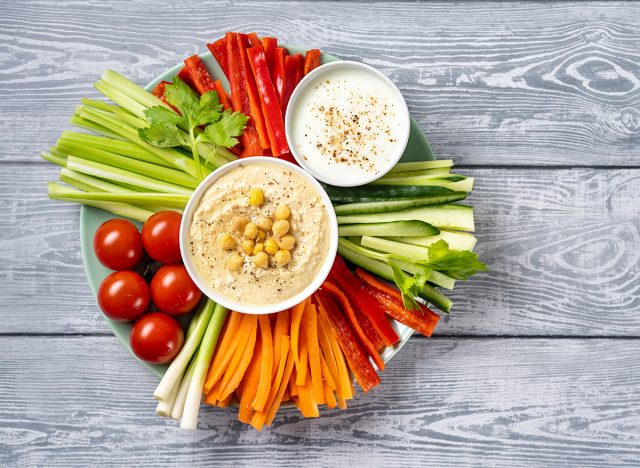
Fiber Content: ~6g per 2 tbsp hummus and 1 cup of veggies
Why It Works: Hummus, made from fiber-rich chickpeas, provides a combination of fiber, healthy fats, and protein. Pairing it with crunchy, fiber-filled vegetables like carrots and cucumbers makes for a satisfying and nutrient-dense snack.
Customize it: Add bell peppers, celery, or cherry tomatoes for more variety and fiber.
Avocado Toast on Whole Grain Bread
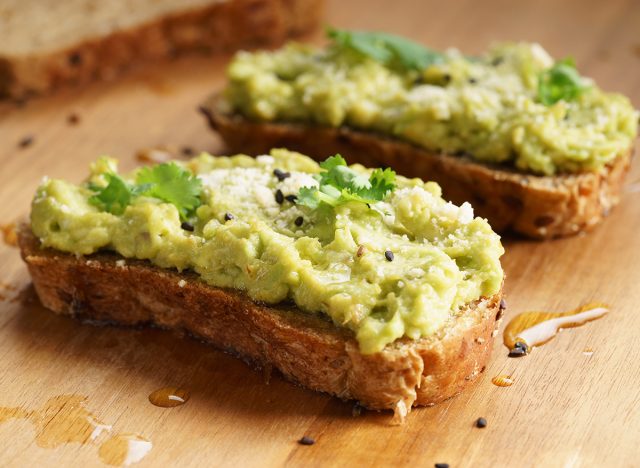
Fiber Content: ~10g per serving (1 slice whole grain bread + ½ avocado)
Why It Works: Avocados are loaded with heart-healthy monounsaturated fats and fiber, while whole grain bread offers an extra dose of fiber to help keep you full longer.
Customize it: Add toppings like tomato slices, microgreens, or a sprinkle of chia seeds for even more fiber and nutrients.
Greek Yogurt with Flax Seeds and Berries
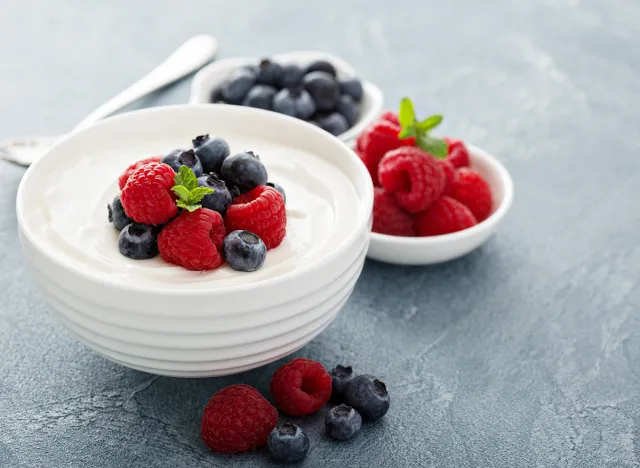
Fiber Content: ~8g per serving (1 cup Greek yogurt, 1 tbsp flax seeds, ½ cup mixed berries)
Why It Works: Flax seeds are packed with fiber and omega-3 fatty acids, and when combined with fiber-rich berries like raspberries and blackberries, this snack becomes a powerful digestive health booster. Greek yogurt adds protein and creaminess to make the snack well-rounded.
Customize it: Swap flax seeds with chia seeds or add a spoonful of almond butter for a richer flavor.
Popcorn (Air-Popped)
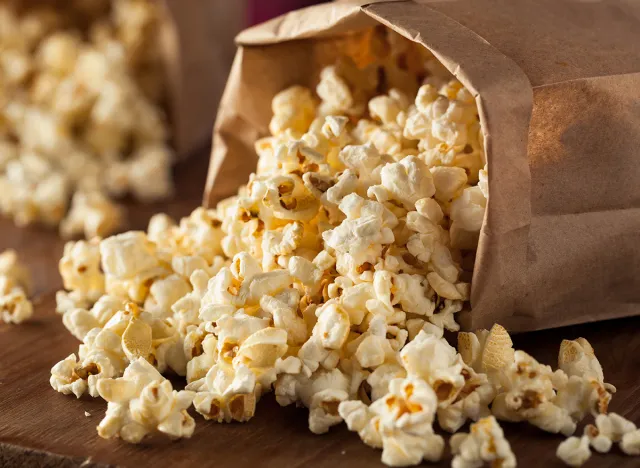
Fiber Content: ~4g per 3 cups (air-popped)
Why It Works: Popcorn is a whole grain that's low in calories but high in fiber, making it a great snack for when you're craving something crunchy. Air-popping the kernels keeps the calorie count low while maintaining all the benefits of the fiber.
Customize it: Sprinkle with nutritional yeast or a pinch of sea salt for flavor. Avoid adding butter or oil to keep it light and healthy.
RELATED: Stop Making These 10 Smoothie Mistakes That Cause Weight Gain
Roasted Chickpeas
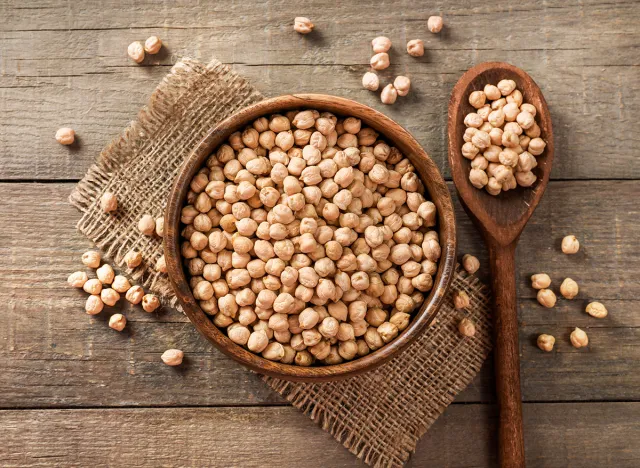
Fiber Content: ~6g per ½ cup
Why It Works: Chickpeas are rich in both protein and fiber, making them a satisfying snack that will keep you full for hours. Roasting them gives them a crunchy texture that makes for a great alternative to chips.
Customize it: Season with spices like paprika, cumin, or garlic powder for a flavorful twist. You can also use different legumes like lentils or black beans.
Oatmeal Energy Bites
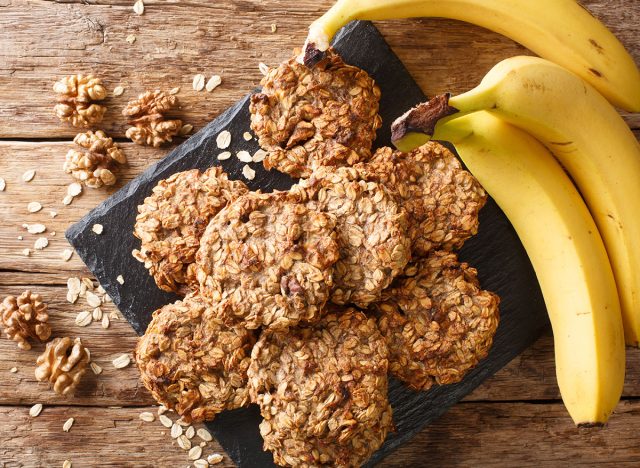
Fiber Content: ~4g per serving (2 bites)
Why It Works: These no-bake energy bites made with oats, flaxseeds, and almond butter are not only delicious but also loaded with fiber, healthy fats, and protein. They're a great on-the-go snack that satisfies hunger and keeps you energized.
Customize it: Add dark chocolate chips, shredded coconut, or dried cranberries to mix up the flavors and textures.
Pear Slices or Pineapple Slices with Cottage Cheese
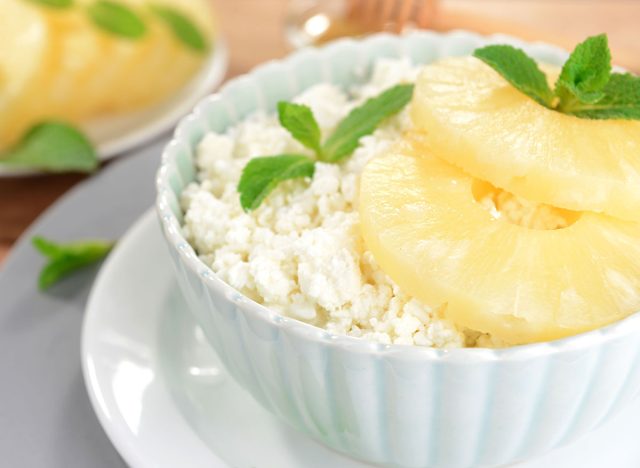
Fiber Content: ~5.5g per medium pear
Why It Works: Pears are an excellent source of fiber, particularly soluble fiber, which is beneficial for digestive health. Pairing pear slices with cottage cheese creates a balanced snack that combines fiber with protein and healthy fats.
Customize it: Add a drizzle of honey or sprinkle with cinnamon for extra sweetness, or swap cottage cheese with Greek yogurt for a different texture.
Edamame

Fiber Content: ~5g per ½ cup (shelled)
Why It Works: Edamame is not only rich in fiber but also packed with plant-based protein. It's a great snack for those looking to add more fiber and protein to their diet while keeping calories low.
Customize it: Sprinkle with sea salt or a dash of soy sauce for flavor. You can also toss the edamame with sesame seeds for added crunch and nutrients.
RELATED: These 6 Cheat Codes Made My 40-Pound Weight Loss Simple
Bonus Tips for Adding More Fiber
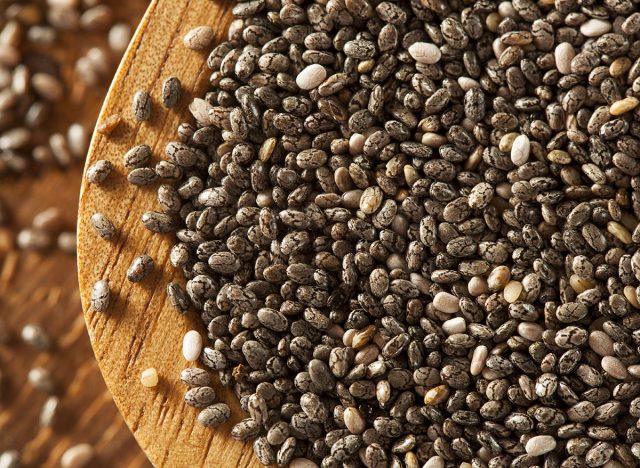
If you're looking to incorporate even more fiber into your diet, here are some simple ways to elevate the fiber content of your meals:
- Add Seeds: Sprinkle chia seeds, flaxseeds, or hemp seeds onto your yogurt, smoothies, or salads for an extra fiber boost.
- Go Whole Grain: Choose whole grain options whenever possible, such as whole wheat bread, crackers, or tortillas.
- Increase Vegetable Intake: Use raw veggies as a base for your snacks or add them to wraps, dips, or smoothies to naturally boost fiber intake.
- Use Legumes: Incorporate legumes like chickpeas, lentils, or black beans into dips, soups, and salads for a high-fiber, protein-rich addition.
Final Words on Fiber

By making informed dietary choices and gradually increasing fiber intake, individuals can improve their overall health and well-being. However, it's always important to consult with a doctor or dietitian before making significant changes to your diet. Also, you should gradually increase fiber, primarily to prevent gastrointestinal discomfort and to allow the digestive system to adjust to the increased fiber load. Sudden increases in dietary fiber can lead to symptoms such as bloating, gas, and abdominal cramps, as the gut microbiota may need time to adapt to the changes in fiber consumption. And if you enjoyed this article, take advantage of these 15 Quick Ways to Lose Body Fat Percentage in a Week.




